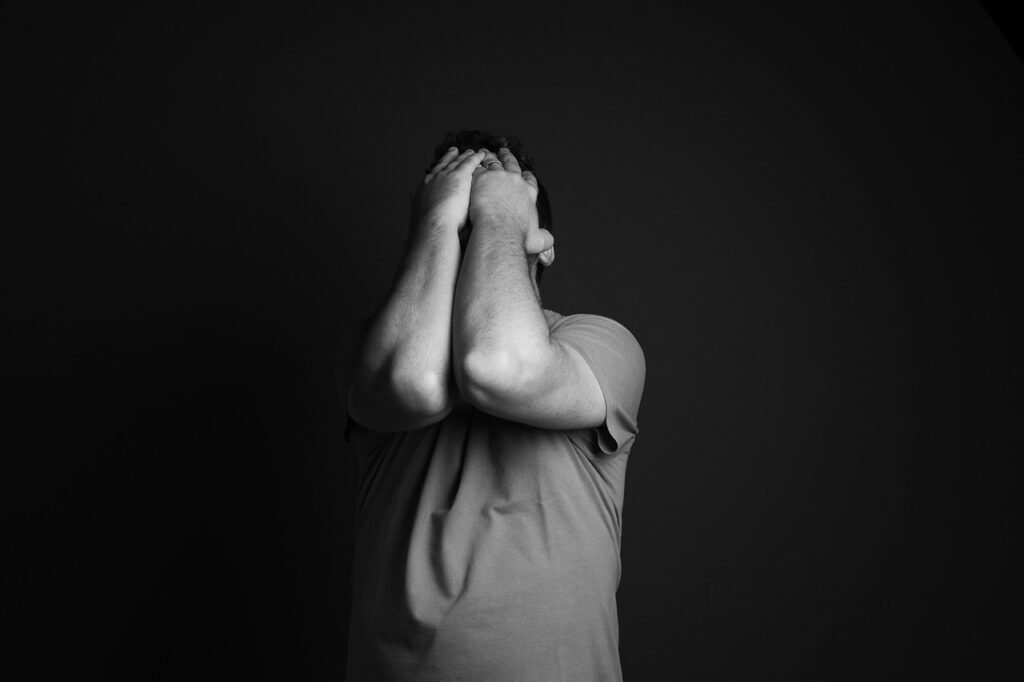Mental health is just one aspect that millions and billions of people around the world grapple with anxiety being second on the list where depression takes first rank. Depression is the leading cause of disability across worldwide, according to the World Health Organization (WHO), and anxiety disorders are ranked 6th in global burden. While these illnesses are difficult to navigate, there is genuinely a better quality of life if you take specific steps in your daily routine. Below is an article that deals with managing anxiety and depression. The discussion flows in terms of statistics, real-life stories, and actionable tips sure to work.
Understanding Anxiety and Depression

Before exploring strategies, it’s crucial to understand the impact of anxiety and depression.
- Anxiety involves the feelings of unyielding concern, fear, or nervousness. Anxiety may be characterized by jitters, a racing heart, and lack of concentration. Anxiety interferes with daily activities; it makes every stressor overwhelming to handle and carries on affecting all personal relationships that one encounters. Chronic anxiety will affect work, social interactions, and quality of life.
- Depression includes feelings of sadness, indifference, and a loss of interest in things that the individual used to enjoy. Classic symptoms include low energy, changes in appetite, and sleep disturbance. It makes a person unmotivated and low on energy; therefore, even minor activities appear to be very overwhelming. It affects interpersonal relations, work, and overall functioning-that may lead a person to feelings of hopelessness and
Statistics:
| Condition | Global Impact | Prevalence |
|---|---|---|
| Anxiety | Affects approximately 1 in 13 people worldwide | Affects around 284 million people. |
| Depression | Leading cause of disability globally. | Affects over 280 million people. |
| Suicide | A serious consequence of untreated depression. | Over 700,000 deaths annually. |
How Anxiety and Depression Affect Your Life

| Aspect | Anxiety | Depression |
|---|---|---|
| Impact on Daily Functioning | Persistent worry can disrupt daily tasks and routines; may lead to procrastination or avoidance. | Causes fatigue and lack of motivation, making it hard to perform daily activities. |
| Effects on Relationships | Can create distance; may lead to social withdrawal or irritability, straining interactions. | Causes emotional withdrawal and loss of interest in social activities, leading to isolation. |
| Work and Academic Performance | Impairs concentration and decision-making; may result in absenteeism and decreased productivity. | Results in decreased energy and interest; impacts performance and cognitive functions. |
| Physical Health | Leads to headaches, muscle tension, gastrointestinal issues, and sleep disturbances; can contribute to long-term health problems. | Causes changes in appetite and sleep patterns; weakens the immune system, increasing illness susceptibility. |
| Overall Quality of Life | Chronic stress diminishes quality of life; constant worry overshadows positive experiences. | Feelings of sadness and hopelessness reduce joy and meaning, impacting overall life satisfaction. |
| Risk of Self-Harm and Suicidal Thoughts | Can lead to severe outcomes including self-harm and suicidal thoughts; immediate professional help is crucial. | Pervasive sadness and hopelessness can lead to self-harm and suicidal thoughts; immediate help is necessary. |
Simple and Effective Ways to Manage Anxiety and Depression

Establish a routine
A routine provides structure and, therefore, reduces ambiguity. These are times to wake up, eat, and engage in activities. A routine brings predictability and stability that works to dampen anxiety and symptoms of depression.
Practice Mindfulness and Relaxation Techniques
Several mindfulness practices such as meditation, deep breathing exercises and progressive muscle relaxation help the mind calm down reducing stress levels. Because the sedative and mental-clearing properties of a regular practice go a long way in terms of reducing anxiety symptoms.
Regular Exercise
It is among the most influential means of enhancing one’s mental well-being. Aerobic workouts, like walking, cycling, and swimming, stir the endorphin chemical, which may help improve mood and reduce symptoms of anxiety and depression. At least 30 minutes of moderate exercise on most days of the week should be aimed for.
Get Support
A support network is crucial and can include friends, family members, or support groups. Such connections provide emotional support and help alleviate feelings of loneliness. Additionally, therapy or counseling can introduce you to more coping techniques, enhancing your ability to manage your mental health effectively.
Set Realistic Goals
Setting small and achievable goals helps you organize tasks and avoid feeling overwhelmed by work. Furthermore, breaking down larger tasks into smaller steps and celebrating each milestone builds confidence and motivation. Consequently, this approach helps maintain focus and achieve a sense of accomplishment.
Limit Stressors
Limiting exposure to various stressors has its benefits. This can be done by setting limits at work, limiting exposure to negative influences, or practicing relaxation techniques. Proactively dealing with the stressors themselves may minimize symptoms and further promote well-being.
Consider Professional Help
Professional help is a consideration, especially when symptoms become more serious or lingering. Cognitive-behavioral therapy, dialectical behavior therapy, and medication prescribed by a medical expert can help alleviate anxiety and depression. Furthermore, regular follow-ups with mental health specialists ensure more effective treatment and better management of symptoms.
Real-Life Stories: How Others Have Managed Their Mental Health
Annie’s Story: Overwhelmed to in Control
Emma was a teacher, aged 29. She was really overshadowed by anxiety. The most ordinary things she did each day were hard to do; she always thought that something bad was occurring at work or in personal life. First, Emma structured her day and made certain practices for mindfulness, such as breathing and meditation. These changes helped her considerably not only to get rid of her anxiety but also to control her everyday life.
James’ Transformation: From Despair to Resilience
James, a 35-year-old graphic designer, felt terribly depressed after he had lost his job. He was extremely fatigued, hardly had any appetite, and basically felt hopeless over his life. By the time professional interventions took place, James started going to therapy and practicing regular physical activity. Cognitive-behavioral treatment and sport helped James find a new meaning in everything and become stronger, which let him look at life from a different perspective.
Conclusion

Managing anxiety and depression involves understanding their effects and employing effective strategies such as structured routines, mindfulness, exercise, and support. Additionally, real-life stories demonstrate that with the right approach and professional help, improvement is achievable. By adopting these methods and maintaining a positive outlook, you can ultimately achieve a more balanced and fulfilling life.
In the stark and simple words of Winston Churchill, “When you are going through hell do not stop”. Each step takes you a little closer to recovering and ultimately living as mentally healthy a lifestyle as possible.

